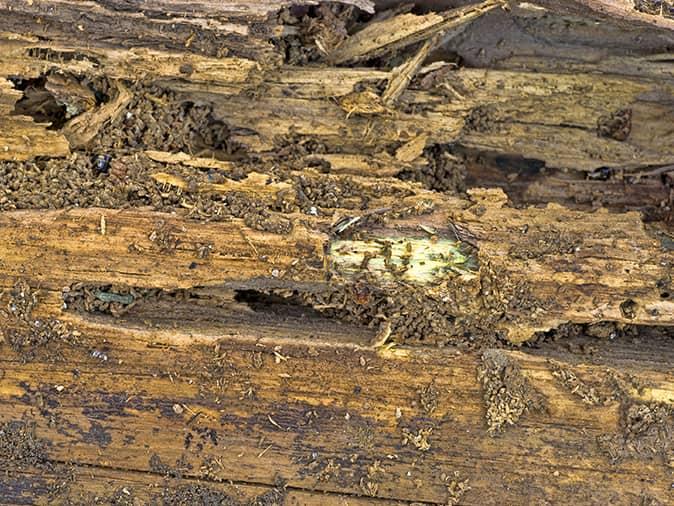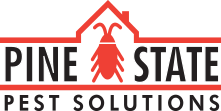August 18, 2022
Carpenter ants in Maine are common structure infesting ants that are naturally drawn to bathrooms, kitchens, and laundry rooms as well as other rooms that are prone to – you may have already guessed it – moisture issues. While moisture is a strong attractant for carpenter ants, it’s not the only thing that will draw the big black ants to your home. Read on to learn more about the connection between moisture and carpenter ants, what else attracts these wood-destroying ants to your home, as well as warning signs of carpenter ant damage.

Moisture issues & carpenter ants
High humidity, poor ventilation, and damp crawl spaces contribute to moisture issues in Maine homes but so does seasonal changes. Heavy rains and/or melting snow -depending on the season- can cause serious moisture issues and even make wood soft and porous. Wood that is easy to penetrate is very attractive to carpenter ants because they’ll be able to excavate it rather easily to make tunnels and carve out galleries where the nest.
Decayed or decaying wood
Maine has plenty of trees – when you fly over our state you really get a sense of just how much of it is forest and woodland. While that is a good thing, it does create a bit of a problem for property owners with plenty of land. There’s always a tree with cavities that would perfectly support a carpenter ant nest and there’s also dead or dying trees, rotting tree stumps, leaves, and other organic debris to be found. Just as they like wood that has been softened by moisture problems, carpenter ants thrive when there is decayed or decaying wood nearby.
Easy access to a home
While many homeowners embrace the natural landscape around their home, there is cause to be cautious. If tree branches touch the house, it creates a bridge for industrious carpenter ants. Cracks in the foundation and other openings on the exterior of the house also make entry not only doable but rather easy for these pests.
Food that is up for grabs
Although carpenter ants infest wood, they don’t actually consume it. Instead, their diet is made up of protein and sugar. Outside, this means they’ll eat living and dead insects as well as honeydew produced by aphids and scale insects. Inside, these large ants feed on meats, pet food, syrup, honey, sugar, and other sweets they uncover while foraging. Since they must eat to live, they will automatically be drawn to places where they can find food sources.
How to make your home less appealing to carpenter ants
If you’d prefer to only welcome invited guests and certainly not pests that would damage your home given the chance, we recommend taking inventory of issues and correcting them. With that in mind, here are a few carpenter ant prevention tips to try:
- Correct moisture problems
- Use a dehumidifier in rooms with high humidity
- Repair leaky plumbing
- Fix or replace leaking appliances
- Remove stumps, rotting logs, and other decaying or dead wood
- Relocate woodpiles so they are not touching the outside of your house
- Trim back overhanging tree limbs
- Seal all openings that lead into the house
- Clean gutters and make sure downspouts divert water from collecting at the foundation
What to do if you find carpenter ants near your home (or in it)
If it’s too late and carpenter ant activity is already present on your property or worse, in your home, contact Pine State Pest Solutions for help! Offering effective carpenter ant control in Auburn, North Yarmouth, and Freeport as well as throughout our multi-county service area, our locally owned and operated pest control company will locate the source of the carpenter ant infestation and treat your home using the best products available.
For even greater coverage, we highly recommend signing up for year-round home pest control. In addition to addressing carpenter ants, our residential plans target a variety of common household pests including other types of ants, mice, cockroaches, beetles, and spiders. Compare plans below or simply give us a call to discuss your pest problem!
*initial start-up fees may apply.

 Subscribe
Subscribe